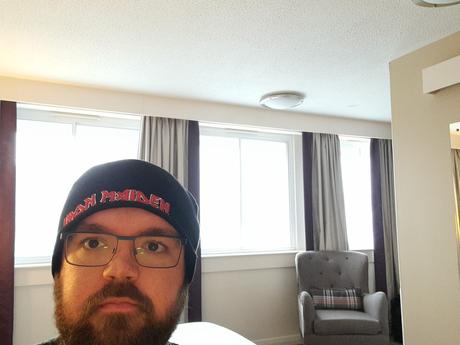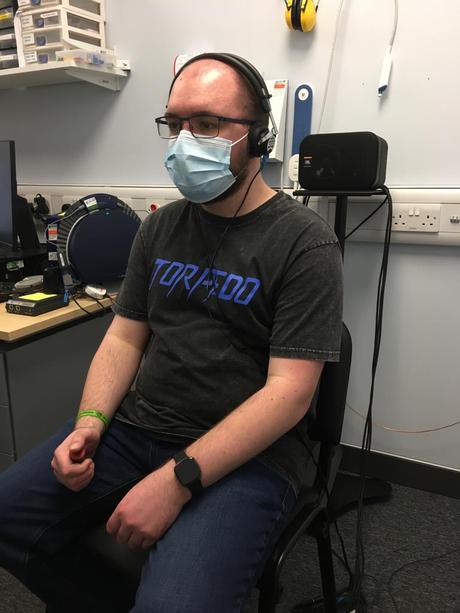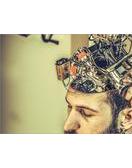The Cochlear Implant Question
It’s back to London once again, this time for a full day of tests to see if I’m a suitable candidate to receive a cochlear implant, which is a device that can potentially restore some hearing function when hearing aids are no longer sufficient. I’ve already had an appointment at the Royal National ENT Hospital to discuss its mechanics, but now it’s time to find out if it’s possible.
A cochlear implant (CI) is an electronic device, which can provide a sensation of sound to children and adults who receive no useful benefit from conventional hearing aids. At the Royal National ENT and Eastman Dental Hospitals (RNENTEDH), wherepossible, we offer our patients a choice of different implant systems. A cochlear implant has several different parts, some are internal (cannot be seen) and some are external (worn behind the ear). A cochlear implant works by turning sounds into tiny electrical pulses, which are sent directly to the hearing nerve. The implant therefore bypasses the inner ear structures which are not working. It is important to remember that no electronic device can be expected to restore function to the level experienced by a normally hearing ear.
-University College London Hospitals, Cochlear Implant Programme
An Early Start
I was told I’d need to be at the hospital at 8 am in the morning, so it made sense to book a hotel for the day before to save driving from Wales to London in the early hours of the morning. The hotel is directly opposite the car park we usually park in when I venture to London and is in the vicinity of all the UCL Hospitals. Unfortunately, there will be no time for sightseeing, as the multiple reminders keep pinging on my phone to let me know how long the day will be.
Thoughts and Feelings?
I’ve read mixed things about cochlear implants being used to treat hearing loss in superficial siderosis, so I don’t really want to get my hopes up in case I’m unsuitable. If I can have a cochlear implant and get some sort of hearing function back, it’ll be better than winning the lottery; after all, music was my life and passion before I became deaf, but I do know I might not even be able to process music at all, even with the implant. Am I anxious? Slightly, but I’ve had to adapt to the hearing loss, so I guess I’m used to it now. Saying that, though, any sort of hearing function would make things a little easier. Either way, I’m keeping my hopes low, and anything positive is a bonus, a potentially massive bonus.

On Arrival
My parents and I arrived just in time for the Liverpool football (soccer) match, which we watched in a pub around the corner from the hotel. It was nice to switch off and have some calm before the coming storm of appointments. When we got back to the hotel, I went into my room, and my mind began to race. Yep, I guess I’m really hoping I can get some hearing back as much as I try to stay neutral minded.
The Big Day
It was the usual start to the morning with the superficial siderosis symptoms on overdrive. Maybe a bit of nerves getting to me had exacerbated them, but the tinnitus and headache were on overdrive. Waking up at 4:30 am isn’t something I’ve done for a while, not since my last journey to London anyway, but it wasn’t too hard, and thankfully I woke up naturally before my deaf alarm clock could shake the foundations of the hotel. I got ready and watched a bit of Tipping Point, one of my favorite dinner time quiz shows, paying more attention to the early morning BSL interpreter than the show itself. It’s funny how the sign language interpreter is only present in the early hours of the morning; it’s not like deaf people only watch TV at that time. The plan was breakfast at 6:30 am and then straight to the hospital at 8 am.
Audiology

After making our way to the Royal National ENT Hospital and getting through the covid screening, it was up to floor 5 for audiology tests. Firstly, I was asked about my hearing deterioration, which I explained was a bilateral minor hearing loss in 2011, and I wore hearing aids up until 2015, which is when I had a sudden right-sided hearing drop overnight. I asked as many questions as I could, mainly as I also had glue ear at the time, so I suspected it wasn’t just superficial siderosis related, but I doubt I’ll ever find out as it’s difficult to look back.
I had a pure-tone hearing test and a bone conduction hearing test. To my surprise, I could just about hear the low pitch sounds in my right ear, although I couldn’t hear anything in my left ear. However, I was told my hearing loss is profound, so it would be pointless to try a further hearing test that involved hearing aids. The audiologist then sent me back to the waiting area, ready for my next appointment.
Speech and Language Therapy
The following speech and language therapy appointment was more about my expectations than anything. I told Francesca, the therapist (who I’d met before), that I was writing this blog as I went about my day and said that I’m keeping a mindset that anything is better than nothing, but I’m not expecting my natural hearing back, and that’s only if a CI is an option in the first place.
Francesca asked me my current methods of communication, to which I told her lip-reading, British Sign Language, speech to text technology (which she clearly remembered from when we last met as it was incorrectly transcribing some pretty rude words) and writing things down. Next, we discussed the workings of a CI, and as before, she said most of the questions I had would be for the surgeon.
Francesca explained that once the implant is inserted, I would have it switched on in 4 stages, with each stage giving me a wider range of sounds. She said it would be switched on after ten days, and it would be roughly a 2-hour operation to have the implant inserted. She said to remember it’s a journey, and once it’s switched on, I’d need to adapt to it and learn to recognize sounds. I gave her an SSRA wristband, and my parents and I went to get lunch before the appointment with the surgeon in the afternoon.
Cochlear Implant Assessment
My mum, dad and I went into a room with the consultant surgeon, who answered the remainder of my questions. He told me that if I go ahead with the CI, it will render useless any prospects of my natural hearing coming back if the iron on my brain is entirely removed. He also told me he would need more information regarding the neurostimulation device I had discussed with my neurosurgeon in Cardiff as an option for long term pain relief. He said he would need to contact the CI manufacturer to make sure the devices were compatible with one another. I said I would speak to my neurosurgeon to get more information. I then explained I would pick hearing improvement over neuromodulation, as there are other forms of pain relief such as compound gabapentin cream, which I have recently inquired about.
The surgeon said he would review my hearing tests, MRI scans and CT scans with the multi-disciplinary team and get back to me in around two to three weeks.
Home Time Yet?
My parents and I left the hospital and walked about three blocks before my mom had a phone call from the surgeon. He asked me to go back to the hospital for a CT and MRI scans to ensure he had enough information. So we turned around and headed back to the hospital to the radiology suite. I met the radiographer and filled out the safety form. He was a bit uncertain about both the PEEK implant and ventricular access device, which I have in my head. I told him they’re both MRI compatible, but he wouldn’t take my word for it, even though he was fine when I said I don’t have a pacemaker? After I eventually managed to get him to acknowledge I had an MRI last June, and his supervisor turned up asking what was taking so long, I went for the scan. The scan only took 20 minutes, followed by a 10-minute CT scan. We then left the hospital to head home, for real this time.

